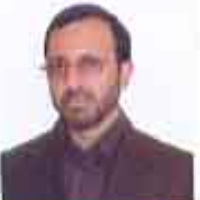Comparison of Intellectual Capital of Teachers of Intelligent and Normal Schools in the Primary Schools of Sari
Author(s):
Abstract:
The purpose of the present study was to compare the degree of intellectual capital among elementary school teachers of both ordinary and intelligent schools in Sari. Considering its purpose, this study is applied and considering its method, it is descriptive-survey. The population of the study consisted of all teachers working within Sari City's Intelligent elementary schools (n=79) and all teachers working in the same city's ordinary elementary schools (n=535). Based on Krejcie-Morgan's table, the sample was calculated to be 66 teachers from intelligent schools and 226 teachers from ordinary schools. This sample was chosen based on stratified random sampling and by considering their gender. Bonti's Intellectual Capital questionnaire (1998) was used to gather the data. The validity of this questionnaire was investigated and validated and its reliability was calculated as 0.889 using Chronbach's Alpha coefficient. The data for this study were analyzed using independent groups t-test and one-way ANOVA. The results showed that there's a significant difference between ordinary and intelligent school's teachers regarding their intellectual capital. The intellectual capital mean for intelligent elementary school's teachers was significantly higher than the intellectual capital mean for ordinary elementary school's teachers. Furthermore, there's a significant difference between various dimensions of intellectual capital such as human, structural and relational dimensions between ordinary and intelligent school's teachers. In other words, the mean for various dimensions of intellectual capital for intelligent elementary school's teachers is significantly higher than ordinary elementary school's teachers. There wasnt any significant difference between teacher's intellectual capital in terms of their gender and educational degree.
Keywords:
Language:
Persian
Published:
Information and Communication Technology in Educational Sciences, Volume:7 Issue: 2, 2017
Pages:
149 to 162
https://magiran.com/p1745864
مقالات دیگری از این نویسنده (گان)
-
The Effectiveness of Metacognitive Education of Changing Personal Structures on Perfectionism and Emotional Dyslexia in Students with the flip-flop of Triple Words Approach Based on Equilibrium Theory in Islam
Neda Khodashenas Firouzabadi*, Reza Donyavi,
Journal of Islamic Lifestyle Centered on Health, -
The Effectiveness of Logotherapy Based on Rumi's Thoughts in Death Anxiety and Depression among Women with Breast Cancer
Sh Bababnejad Darikandeh, A Norozi *, H Bagheri
Community Health Journal,



